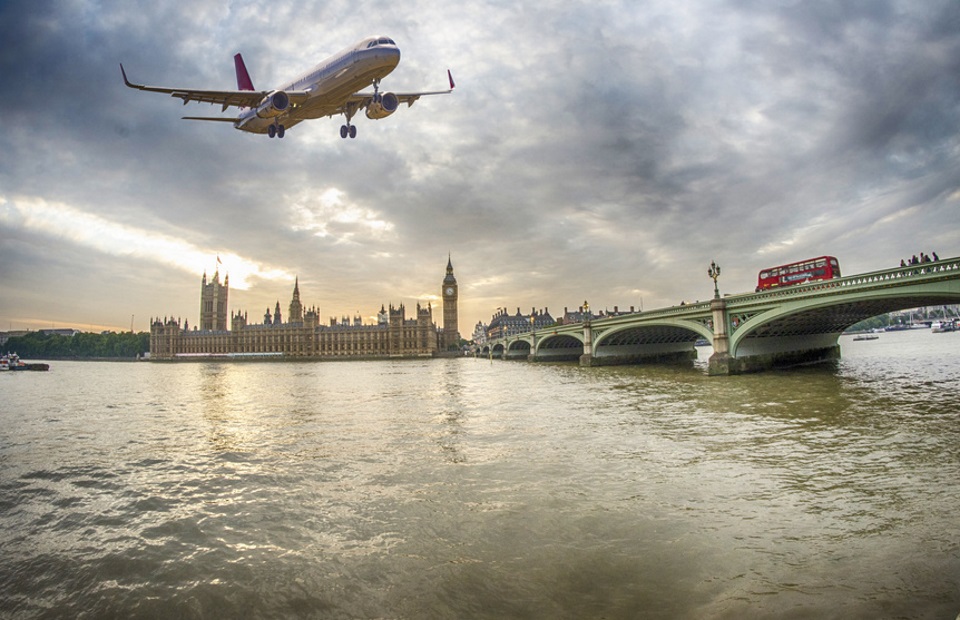
Flying to Britain
As a Western nation on the edge of Europe, it was natural that Britain would end up being a transport hub. Flights to and from Britain are usually routed through one of Britain’s main airports, Gatwick, Heathrow and Manchester, who between them handle well over 2 million flights a year.
Getting to Britain on a plane is by far the fastest and easiest way of getting there, the alternatives being a cross-Channel ferry or the Eurostar through the Channel Tunnel.
Passengers are well catered for in the dizzying arena of the main British airports and, barring strike action, usually have a hassle-free time.
The many airports in Britain are mostly relics of World War 2, during which many were built to handle the British and American bombers that wreaked destruction across Nazi occupied Europe. The length of runway required for the enormous B-29 meant that very large airbases were constructed and then converted into passenger airports after the war, perfectly suited to the ever-larger planes that accompanied the rise of the jet engine. RAF Fairford was in fact long enough for the Space Shuttle to land on.
Heathrow
Heathrow airport began life in 1930 but was much expanded during World War 2. The expansion continued after the end of the conflict and now Heathrow is one of the 10 busiest airports in the world, handling over 78 million passengers in 2017. The battle to build a new runway has rumbled on for decades but currently there are 2 runways that handle most flights and approval for the third has gone through. The 4 terminals handle all the passengers and contain what could be considered a small city. There are shops, bathrooms and all the travel services a passenger might need, including car hire and insurance available in the terminal buildings.
As London Heathrow Airport, as it is officially known, is the busiest in the UK, the logistics of running it are enormously complicated. The current set of terminals was built to accommodate 55 million passengers a year, not the 78 million who passed through last year, so there have been rising complaints of delays and overcrowding. It is hoped that the third runway and extra terminals will alleviate some of this pressure, but for the moment it can be a troublesome place to land and take off from. Advice for passengers is to fly to one of the other 4 London airports or a hub like Manchester if possible, they are all less crowded and can offer similar services.
Manchester Airport
Second only to Heathrow in the UK in size, Manchester airport is the major air transport hub for the North of England, handling 27 million passengers in 2017. It began life in 1938 as Ringway Airport, then became RAF Ringway during the war. The current airport has a capacity of 50 million passengers a year so offers a much quieter and more efficient service than Heathrow. It is a common stopping off point for flights to the UAE and to the USA and its modern terminals are comfortable and well appointed. Access to the North is easy from Manchester, with Newcastle, Leeds, Birmingham and Leeds all being less than 2 hours away by train. A super-fast maglev train is being built to serve the airport, connecting London, Birmingham, Leeds and Manchester.
Gatwick
Boasting the largest numbers of passengers flying from one single landing strip until it was recently pipped to the post by a Mumbai airport, Gatwick is London’s next largest airport after Heathrow. It is supremely well placed for excellent access to London but has resultantly large numbers of passengers. A very busy airport, it serves transatlantic and European flights, as well as connections to the Middle East and Asia. 45 million passengers took flights to and from Gatwick in 2017, mostly from Europe.
Smaller Airports
Nearly every major city in Britain has an airport within 20 minutes’ drive, making flying inside the island an increasingly popular way of travelling. Most can be reached in well under an hour from anywhere in the UK, including flights to the islands of Scotland. International passengers are often routed through a major airport and then on to a smaller airport, easing congestion.
Airlines
Britain has a large number of native airlines and all the major carriers in the world operate from the UK, giving a huge amount of choice to passengers. First class, economy and business class flights can be obtained at dozens of airports, where the facilities are usually modern and well appointed.
Flight Safety
Britain has one of the best flight safety records in the world and is a leader in aviation technology. There hasn’t been a major air disaster in the UK for over 20 years, making flying in Britain a much safer prospect than driving on its (also very safe) roads.
Prices
Flights to and from Britain are very competitively priced due to the high level of competition. Budget airlines offer very cheap but not very comfortable flights and even the larger carriers offer seats on a budget.

